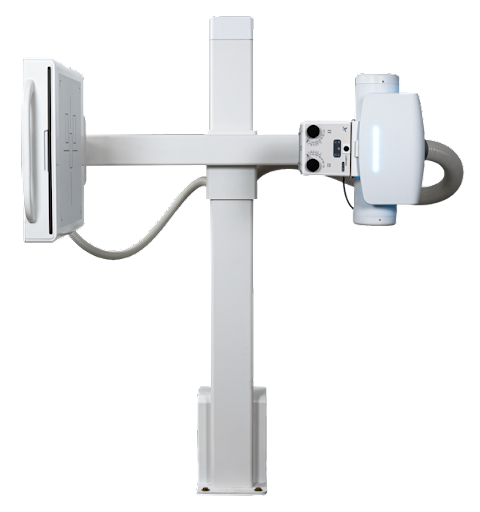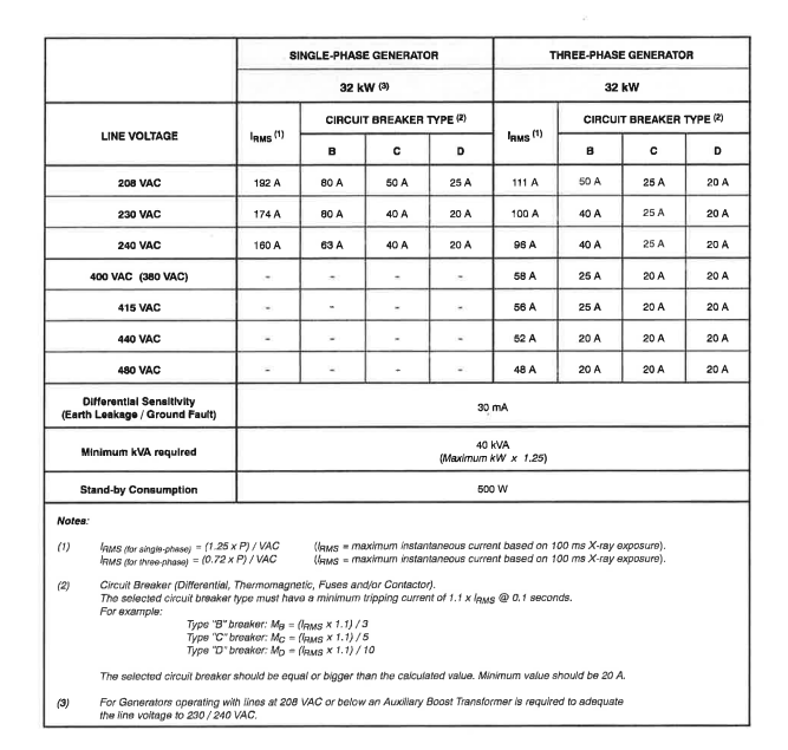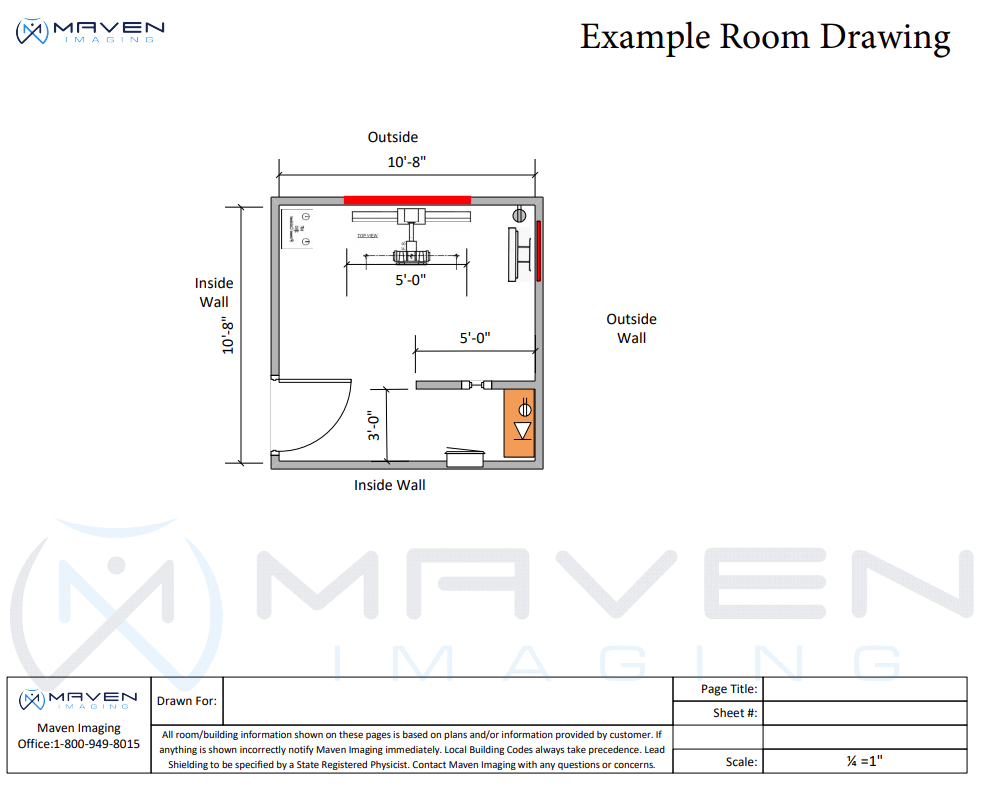Whether you are looking to upgrade your existing x-ray system or purchase a complete digital x-ray room, there are a lot of things that you will want to consider in order to make the right decision on what digital x-ray system is best for your chiropractic practice. It can be overwhelming, especially since x-ray is such an important part of a Chiropractic office and also a significant investment.
For more in-depth information, download our comprehensive Chiropractic Buyer's Guide that explores in detail the different types of digital x-ray systems for Chiropractors. Or feel free to contact our helpful experts at Maven Imaging with any questions you may have.
In this post we’ll cover:
- Buying new vs retrofitting
- X-ray equipment in a chiropractic x-ray room
- Types of DR panels
- Digital x-ray image storage and backup
- How to build a digital x-ray room
Should I build a new x-ray room or retrofit an x-ray room?
The first question in your journey to find the right product is to understand which product you will need for your practice. There are two different options that most Chiropractors can choose from. You are either starting a new practice, opening another location or replacing an old x-ray system that is on its last leg. In that case, you are looking to purchase a completely new digital x-ray system.
Alternatively, you may have a working x-ray system and are wanting to move away from film and chemicals, or may have older digital technology like a CR or older DR panel. In that case you would be retrofitting your existing x-ray system.
Should I buy a new or used digital x-ray system?
Many Chiropractors will search for used digital x-ray systems as a way to minimize the cost of going digital. For some, this can be a great cost savings and work out in their favor. However, many others end up having buyer's remorse as it's a gamble and there are no guarantees.
If you are looking for used x-ray equipment, please reach out to us during your search and we can help to evaluate the equipment, and give you an estimated value and our honest opinion on if it is a good purchase.
What x-ray equipment is in a chiropractic x-ray room?
There are a number of different options for chiropractors looking to buy x-ray equipment and your decision will ultimately come from how you intend on using the x-ray system, the size of your x-ray room and available electrical. There are a number of specific Chiropractic tools for x-ray, we are going to focus on the most common used within Chiropractic.
A traditional Chiropractic X-Ray room is comprised of:
- Wall stand
- X-Ray generator
- Tube stand
- X-ray tube
- Collimator
- DR Panel
Cost Range: $34-38k (Including DR panel)
Wall stand
The x-ray wall stand is where the DR panel, CR Cassette or Film Based Cassette is placed to capture the x-ray. The wall stands normally are 19 x 19 in size and will fit up to a 17 x 17 sized DR panel.
X-Ray Generator
The x-ray generator is the engine of the x-ray system, which drives the amount of power needed to produce an x-ray image. Generators can range in power, but Chiropractors typically purchase either a 32kW or 40kW system.
The more powerful generator will have a higher amount of dose, which will provide clearer images in larger patients. For most customers, a 32kW system is sufficient enough, however if your patient demographics tend to be larger you might want to upgrade to a 40kW system.
Tube Stand
The tube stand is what holds the tube and collimator, which directs the x-ray beam to the wall stand where the digital detector is located. The tube stand can be mounted to the floor only, or wall and floor. The tube stand will move back and forth from the wall stand, where a typical x-ray is either taken at 72 SID or 40 SID depending on the anatomical region that is being x-rayed.
X-Ray Tube
An x-ray tube functions as a specific energy converter, receiving electrical energy from the generator and converting it into two other forms of energy: x-radiation (1%) and heat (99%). Heat is considered the undesirable product of this conversion process; therefore x-radiation is created by taking the energy from the electrons and converting it into photons. This very specific energy conversion takes place in the x-ray tube.
The x-ray tube can have a variety of different configurations, however the most common sold in chiropractic is the 140,000 heat unit, but you can upgrade if needed.
Collimator
The Collimator is attached to the tube stand and gives the operator the ability to restrict the x-ray beam to a specific area. The collimated area can be seen with a light, which will visually display where the x-ray or radiation will go. Some collimators will also come with a laser to help you to position the x-ray tube with the patient.
Types of DR panels for digital x-ray
A DR panel allows you to capture a digital x-ray. DR panels have come a long way in the past 15 years and now come in a variety of sizes, but for the most part they are cassette sized. This means that a traditional x-ray system that can use film based cassettes can now easily be retrofitted with a cassette sized flat panel DR system.
There are different options currently available with DR panels including DR panel size and technology.
What is the best DR panel size for chiropractic x-ray?
DR panels currently come in the following sizes for the Chiropractic market:
- 17 x 17 Tethered
- 17 x 17 Wireless
- 14 x 17 Wireless
The 17 x 17 size is most commonly recommended for a chiropractor as the DR panel will typically stay in the cassette tray and not leave. Unlike an urgent care or imaging center, most Chiropractors do not have a table that they would be moving the DR panel back and forth between.
Most chiropractors with a 17 x 17 tethered panel will take extremities just using the wall stand or they will purchase a system like the Tilting wall stand to make it easier to do extremities without taking the DR panel out of the wall stand.
Should I buy a Cesium (CSI) or GADOX DR panel?
There are two types of panel technology to be aware of when looking at DR panels. One is called Cesium (CSI) and this is the newest and best technology available, and the other is called Gadolinium (GADOX) and this is the older technology.
Cesium technology provides better image quality and less patient dose at the same price point as GADOX.
Digital x-ray image storage and backup
The DR panel is the technology that captures the x-ray image and then allows you to display it on the computer. Once you have acquired the image, the next step is to properly store, view and share it. There are a few important features you should consider; viewing, storage (including backup) and sharing.
PACS System / Mini-PACS
PACS is essentially software to store your digital x-ray images, typically in DICOM format, which is the universal standard image format for x-rays. Once the images are stored, they can then be viewed using web or client viewers to see the image in multiple rooms in your chiropractic office.
Cloud-based x-ray image back-up and storage
A standard digital x-ray image is between 15-20MB so you will want to have a server that is going to be big enough to allow you to hold those images for at least 7 years, as required by HIPAA.
A cloud based back-up is using a third party software like DropBox to make sure that your digital x-ray computer is backed up on a routine basis. An alternative option is the cloud-based PACS, which allows you to back-up your images, but also allows you to view the images outside of your clinic.
Our Cloud Based PACS has the option of sharing images included, and this is a great option for sharing your x-ray images with patients, referring physicians or radiologists.
What you need to know about building a chiropractic x-ray room
Once you decide to purchase a digital x-ray, the fun part begins. Our packages include our project management services as well, so we will be able to assist you from start to finish on your x-ray project.
There are a number of steps that go into building out a new digital x-ray room and we will walk you through those below:
- Location and room size requirements
- Electrical requirements
- Equipment room drawing
- Lead shielding report
- X-ray room build-out
- On-site installation and training
- FDA and state registration
Location and x-ray room size requirements
The very first step is to decide what type of equipment your practice will need and select a room that is appropriate for the x-ray equipment. Site planning requirements may vary by state, so please contact us.
Ideally, the x-ray room would be located on an outside corner that has two outside walls. This will reduce the costs of the lead lining.
Room size depends on the type of chiropractic practice. A standard Chiropractor x-ray room is 12’ x 10’ and includes a wall unit, wall-mounted tube stand, high-frequency generator, and a control room with computer and monitor.
Electrical requirements for a digital x-ray room
First thing when choosing your site, check for adequate power before purchasing property or signing a lease. All wiring and grounding should be in accordance with National Electric Code or local code.
The standard power requirement is 208/240 VAC Single Phase Power (3 phase power upgrade options available) , with approximately 100 amps dedicated to the x-ray room.
We have different x-ray equipment packages that can work with different incoming power depending on what you have available in your office building. Once you find your available power, please contact us and we can assist you with putting together the most affordable package that will work with your specific electrical power.
Equipment room drawings
At Maven Imaging we include an equipment room drawing as part of every x-ray installation to help advise you on the best room design and help save you time and money throughout the project. Typical lead-time is 3-5 working days after the information is gathered on the building and equipment.
Lead shielding requirements for x-ray rooms
Before the construction of the room begins, a shielding report must be provided from a certified physicist with the description of the lead shielding required on each wall, door and window. Once this report is in your possession, it can be given to the contractor and priced out. We have connections to physicists we can help to connect you with for your project, get in touch with our team.
Building the x-ray room
Once we have the physicist report back, we can assist you and your contractor with the build-out project and can assist with accessing the lead materials as well. We assist you with the entire project from start to finish. Once the x-ray room build-out is completed, our team comes out and installs the system and does all the training, and you are then up and running and ready to take digital x-rays!
Registering x-ray equipment with the FDA and state
All x-ray equipment must be registered with the FDA and State Health Department. This information can be found easily by searching your x-ray radiography department by state. We can also assist you with this process.
Conclusion
We hope you found this post helpful. We are the Chiropractic Digital X-ray Experts and have solutions for all types of budgets and clinical applications. We offer nationwide support and in-house financing for all of our Chiropractic digital x-ray products. Give us a call today on (800) 949-8015 or send us an email to speak with one of our experts to learn more. We look forward to assisting you in any way we can with your x-ray project.





